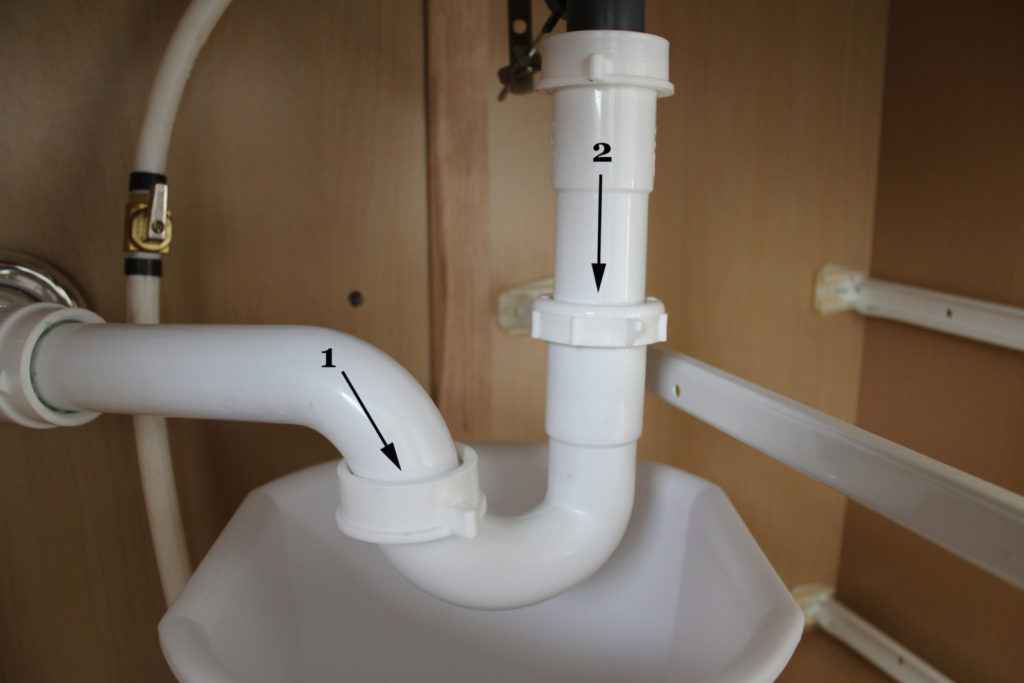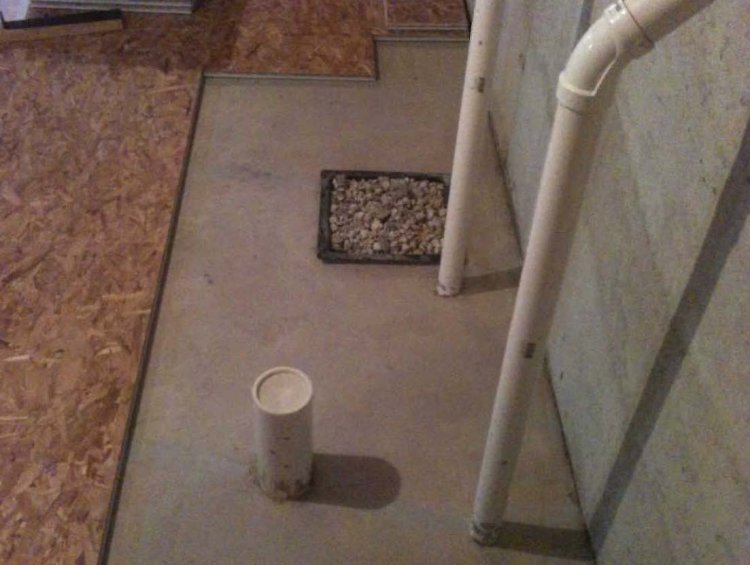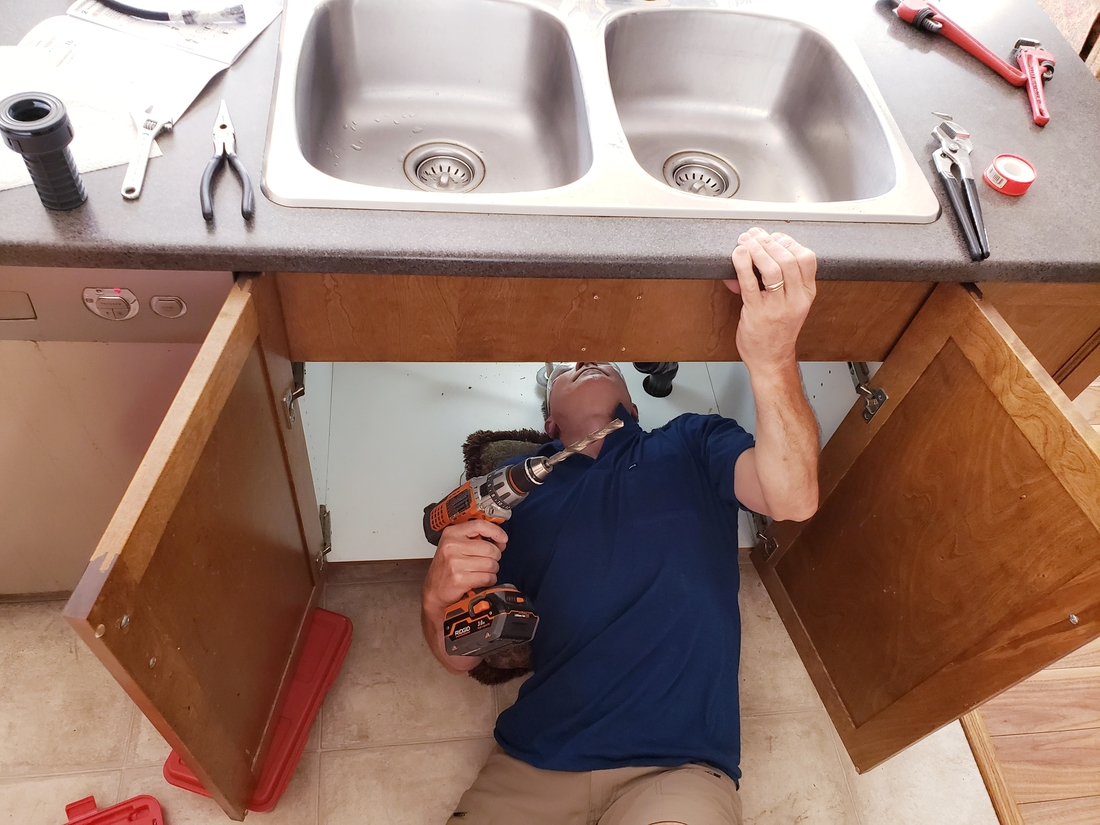Are you dealing with a clogged or leaky bathroom sink trap? It may be time for a replacement. The bathroom sink trap is a crucial component in your plumbing system, responsible for catching debris and preventing sewer gases from entering your home. In this article, we'll guide you through the process of replacing your bathroom sink trap, step-by-step. Bathroom Sink Trap Replacement
Before you begin, gather all necessary tools and materials, including a new trap, pliers, a bucket, and a wrench. Start by turning off the water supply to your sink and placing the bucket under the trap to catch any water. Use pliers to loosen the slip nuts on both ends of the trap and then remove the trap. Next, clean the area where the trap was attached to the drain and inspect the pipes for any damage or corrosion. If any parts need to be replaced, now is the time to do so. Then, attach the new trap by tightening the slip nuts with pliers. Turn the water supply back on and check for any leaks. How to Replace a Bathroom Sink Trap
Replacing a bathroom sink trap can be a DIY project, especially for those with some plumbing experience. However, it's essential to proceed with caution, as any mistakes could result in water damage or further plumbing issues. Make sure to follow the steps carefully and consult a professional if needed. DIY Bathroom Sink Trap Replacement
Step 1: Gather all necessary tools and materials. Step 2: Turn off the water supply to your sink. Step 3: Place a bucket under the trap to catch any water. Step 4: Use pliers to loosen the slip nuts on both ends of the trap. Step 5: Remove the old trap. Step 6: Clean the area and inspect the pipes for any damage. Step 7: Attach the new trap by tightening the slip nuts with pliers. Step 8: Turn the water supply back on and check for any leaks. Step-by-Step Bathroom Sink Trap Replacement
Clogs and leaks are the most common problems with bathroom sink traps. Over time, trapped debris can build up and cause a blockage, leading to slow or no drainage. Leaks can also occur if the trap is old or damaged. Regular maintenance and replacement can help prevent these issues. Common Issues with Bathroom Sink Traps
When it comes to choosing a replacement trap, there are a few factors to consider. The size and type of your sink and its drain, as well as the plumbing code in your area, all play a role in selecting the right trap. It's best to consult a professional or do thorough research before making a purchase. Choosing the Right Replacement Trap for Your Bathroom Sink
As mentioned earlier, you'll need a few tools and materials for a successful trap replacement. These include a new trap, pliers, a bucket, and a wrench. You may also need a pipe cutter, plumber's tape, and replacement parts for any damaged pipes. Tools and Materials Needed for Bathroom Sink Trap Replacement
Here are a few tips to keep in mind when replacing your bathroom sink trap: - Always turn off the water supply before starting. - Use pliers or a wrench to tighten slip nuts securely. - Inspect the pipes for any damage before attaching the new trap. - Double-check for leaks after turning the water supply back on. Tips for a Successful Bathroom Sink Trap Replacement
While replacing a bathroom sink trap can be a DIY project, it's always best to consult a professional if you're not confident in your plumbing skills. A professional can ensure the job is done correctly and prevent any potential issues in the future. Professional vs. DIY Bathroom Sink Trap Replacement
If you encounter any issues during the replacement process, such as difficulty removing the old trap or leaks after installation, don't hesitate to seek professional help. It's better to have a trained plumber fix the problem than risk causing further damage. In conclusion, replacing a bathroom sink trap may seem like a daunting task, but with the right tools and knowledge, it can be a straightforward process. Regular maintenance and replacement can help prevent clogs and leaks, ensuring your sink and plumbing system function properly. Remember to always proceed with caution and consult a professional if needed. Troubleshooting Common Problems During Bathroom Sink Trap Replacement
Why You Should Consider Replacing Your Bathroom Sink Trap

Prevent Clogs and Build-Up
 One of the most common problems that homeowners face with their bathroom sink is clogs and build-up in the drain. Over time, debris, hair, and other materials can accumulate in the sink trap, causing water to drain slowly or not at all. This can be a major inconvenience and lead to costly repairs if left unaddressed. By replacing your bathroom sink trap, you can prevent clogs and build-up, ensuring that your sink drains properly and avoiding any potential plumbing issues.
One of the most common problems that homeowners face with their bathroom sink is clogs and build-up in the drain. Over time, debris, hair, and other materials can accumulate in the sink trap, causing water to drain slowly or not at all. This can be a major inconvenience and lead to costly repairs if left unaddressed. By replacing your bathroom sink trap, you can prevent clogs and build-up, ensuring that your sink drains properly and avoiding any potential plumbing issues.
Improve Aesthetics and Functionality
/sink-drain-trap-185105402-5797c5f13df78ceb869154b5.jpg) In addition to preventing clogs and build-up, replacing your bathroom sink trap can also improve the overall aesthetics and functionality of your sink. Over time, sink traps can become rusty, discolored, or damaged, which can be an eyesore in an otherwise well-designed bathroom. By replacing the trap, you can give your sink a fresh and updated look. Additionally, newer sink traps are designed to be more efficient, allowing for better water flow and reducing the risk of leaks.
In addition to preventing clogs and build-up, replacing your bathroom sink trap can also improve the overall aesthetics and functionality of your sink. Over time, sink traps can become rusty, discolored, or damaged, which can be an eyesore in an otherwise well-designed bathroom. By replacing the trap, you can give your sink a fresh and updated look. Additionally, newer sink traps are designed to be more efficient, allowing for better water flow and reducing the risk of leaks.
Ensure Proper Ventilation
 Another important reason to consider replacing your bathroom sink trap is to ensure proper ventilation in your plumbing system. Sink traps are designed to trap water in order to prevent foul smells from coming back up through the drain. However, old or damaged traps can become loose or cracked, leading to unpleasant odors in your bathroom. By replacing the trap, you can ensure that proper ventilation is maintained, keeping your bathroom smelling fresh and clean.
Another important reason to consider replacing your bathroom sink trap is to ensure proper ventilation in your plumbing system. Sink traps are designed to trap water in order to prevent foul smells from coming back up through the drain. However, old or damaged traps can become loose or cracked, leading to unpleasant odors in your bathroom. By replacing the trap, you can ensure that proper ventilation is maintained, keeping your bathroom smelling fresh and clean.
Save Money in the Long Run
 While replacing your bathroom sink trap may seem like an unnecessary expense, it can actually save you money in the long run. By addressing any potential issues early on, you can prevent costly repairs or replacements down the line. Additionally, newer sink traps are designed to be more durable and efficient, which can save you money on water bills.
In conclusion,
replacing your bathroom sink trap is a simple yet effective way to improve the functionality and aesthetics of your bathroom while preventing potential plumbing issues. If you notice slow draining or foul odors coming from your sink, don't hesitate to replace your trap. It's a small investment that can lead to big savings and a more enjoyable bathroom experience.
While replacing your bathroom sink trap may seem like an unnecessary expense, it can actually save you money in the long run. By addressing any potential issues early on, you can prevent costly repairs or replacements down the line. Additionally, newer sink traps are designed to be more durable and efficient, which can save you money on water bills.
In conclusion,
replacing your bathroom sink trap is a simple yet effective way to improve the functionality and aesthetics of your bathroom while preventing potential plumbing issues. If you notice slow draining or foul odors coming from your sink, don't hesitate to replace your trap. It's a small investment that can lead to big savings and a more enjoyable bathroom experience.










/sink-drain-trap-185105402-5797c5f13df78ceb869154b5.jpg)















































:max_bytes(150000):strip_icc()/analyzing-light-fixture-problems-1152833-hero-5a3b3e1c9fbb43778b89be1cf9673fb9.jpg)









